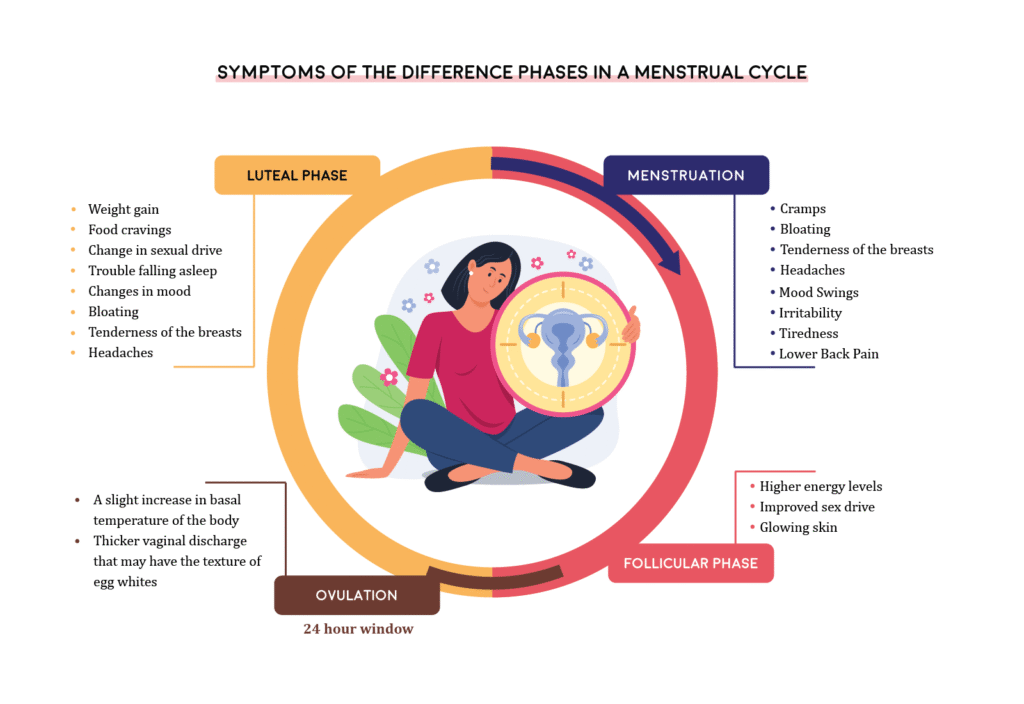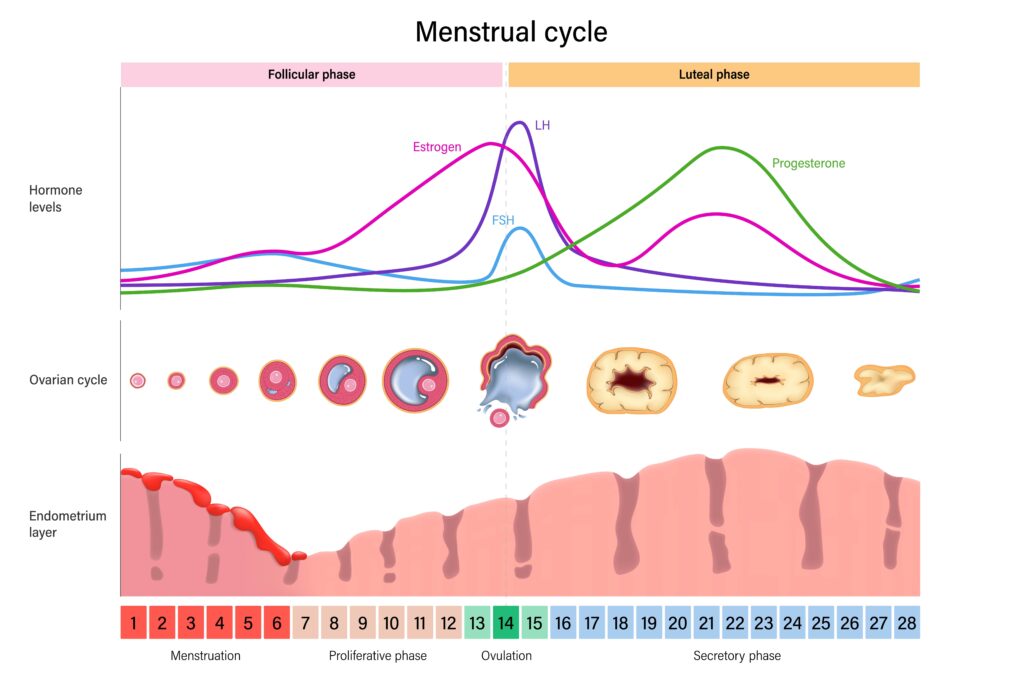
Menstruation is the monthly occurrence of the body shedding the linings of the uterus ; for every woman, this takes place every month. It occurs between 35 days for most women. The cycle, divided into 04 phases as the menstrual phase, the follicular phase, ovulation and the luteal phase, is seen as one that combines complex physical and mental changes.
The shedding of the uterus lining is known as the Menstrual Phase. During this time which lasts for 3-7 days typically, the female body expels blood and tissue that has accumulated in anticipation of a pregnancy. Low levels of oestrogen and progesterone during this time can cause tiredness, moodiness, cramps, pain, and anxiety.
This phase is all about resetting the body. Hormone levels drop and signal to the body that the next phase must begin. Taking care of oneself is vital during this time. It also serves as nature’s way of removing what is no longer needed, allowing for renewal in the next cycle.
This phase starts off on the first day of menstruation and continues until ovulation. This phase is a time of rebuilding and getting ready for the next stage. It goes on for around 10-14 days but may vary from one person to another.
The process of body’s readiness for this phase starts with the brain’s pituitary gland which releases follicle stimulating hormone known as FSH. This makes the ovaries produce several follicles, each containing an immature egg, but only one will mature. The dominant follicle releases more oestrogen, which causes the uterine lining to thicken and get ready for a possible pregnancy.
An enhanced supply of estrogen can be uplifting for women during this phase. Many speak of clarity, energy and active inputs that show the cycle of regeneration has commenced.
This can occur around day 14 of the 28 day cycle and is known as the most crucial phase of the cycle. While it can differ in each individual, this period will see a mature egg released by the dominant follicle and carried through the fallopian tube into the womb. This phase means peak fertility for every woman.
When oestrogen levels are high just before ovulation, some women report feeling more confident and attractive. Ovulation itself can cause mild pain in the lower abdomen. During this time, cervical mucus also becomes clear and slippery, making it easier for sperm to reach the egg.
The time just before ovulation is considered the best for conception because it takes time for sperm to reach the egg. Since the egg’s lifespan is around 24 hours, having sperm already present increases the chances of fertilisation. This fertile window can be tracked by monitoring changes in body temperature and cervical mucus.
After ovulation, this phase lasts about 12 to 16 days. During this time, the ruptured follicle turns into the corpus luteum, a temporary gland that produces high levels of progesterone along with some oestrogen. This hormonal activity is essential for maintaining a thick uterine lining, preparing it to support a fertilised egg.
If fertilization occurs, the embryo will produce human chorionic gonadotropin (hCG), which keeps the corpus luteum alive and maintains progesterone production to sustain early pregnancy. If fertilization doesn’t happen, the corpus luteum breaks down after about two weeks, causing progesterone and estrogen levels to drop sharply. This hormonal withdrawal triggers the shedding of the uterine lining, leading to menstruation and the start of a new cycle.
This phase is associated with the symptoms of Pre Menstrual Syndrome (PMS) – mood swings, irritability, breast tenderness, bloating and fatigue are symptoms associated with this phase. Hormonal swings can result in changes for many.


Viewing the menstrual cycle as a symphony of hormonal changes rather than a linear or singular event reframes it as a vital sign of health. It’s a dynamic system reflecting the body’s reproductive readiness, overall health, and hormonal balance. Many conditions—including polycystic ovary syndrome (PCOS), thyroid disorders, or extreme stress can disrupt the cycle’s rhythm, making cycle tracking an important tool for health monitoring.
The four phases of the menstrual cycle make up a complex but essential signalling system that keeps the body in rhythm. It is a process of preparation, release, and renewal. Viewing the cycle with the right perspective can bring greater awareness, emotional support, and strength to navigate it with an understanding of overall wellbeing.

SatynMag empowers women with inspiring stories, expert advice, and uplifting content to fuel their strength and dreams
Welcome to Satynmag S Suite, online knowledge platform for career and personal growth. This is where you can empower yourself with cutting edge knowledge, latest know-how and grow.


